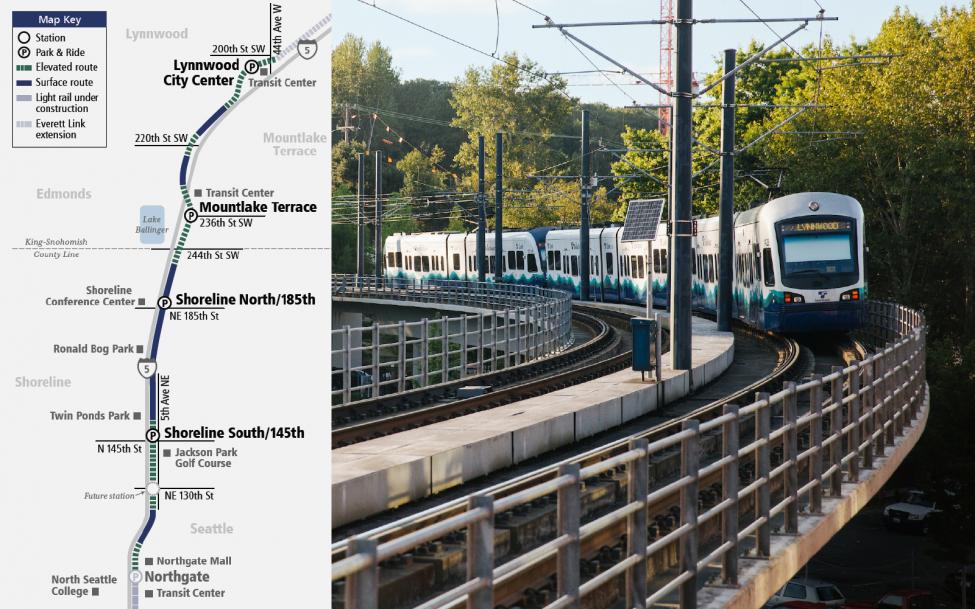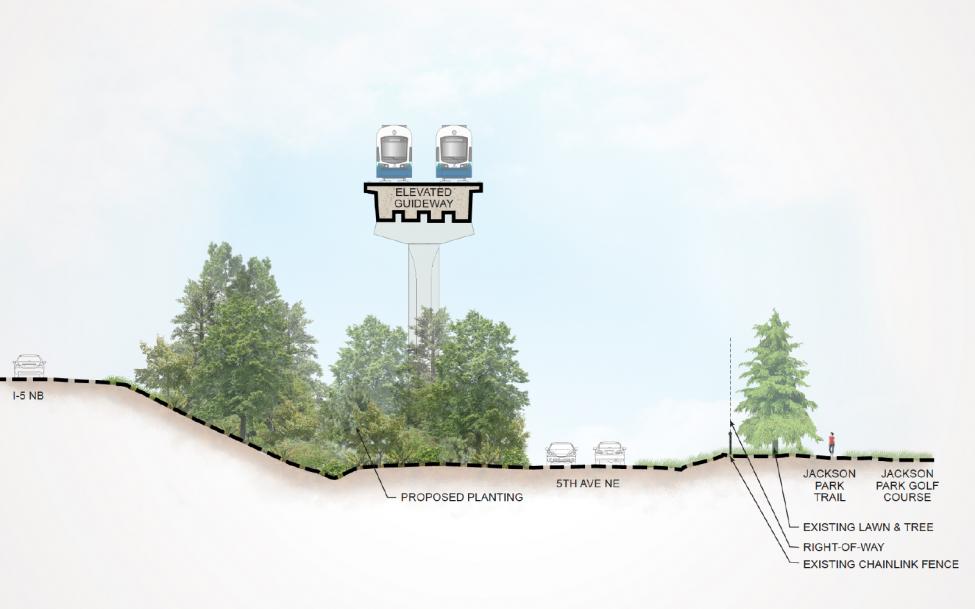
Moving forward: Lynnwood Link moves into construction
(Editor's note: This story was originally published in January, 2019 and has been updated with new information.)
As drivers along I-5 north of Seattle have noticed, early work to extend Link light rail from Northgate to Lynnwod has begun!
Light rail is coming to Lynnwood!
The 8.5-mile line with four new stations line opens in 2024 with 28-minute trips between Lynnwood and downtown Seattle, no matter how bad the traffic is on I-5.
Some of the first visible signs of this progress is happening next to I-5 as contractors begin removing trees.
Building the mostly elevated light rail line in the public right-of-ways along I-5 entails removing approximately 5,300 trees and replacing them with more than 20,000 trees.
As much as possible, Sound Transit will select native, adaptive plant and tree species for replacement. The agency will be planting larger trees and monitoring most of the trees for an extended period to ensure their survival.
The illustration below give you an idea of how the new plantings will be integrated with the elevated train guideways.
Being mindful of bird nesting seasons
As the Lynnwood Link Extension heads into construction, Sound Transit is especially mindful of minimizing harm to birds.
Since mid-March to mid-September is nesting season, Sound Transit has taken several steps to reduce the impact to nesting birds now that tree removal has begun, while maintaining its commitment to the region’s voters to open the project in the 2024.
Prior to removing trees, Sound Transit is surveying the area to identify locations where birds are nesting and identify the specific species of birds.
We will evaluate the results of the survey and work with the contractor to identify trees or structures that can potentially be removed at a later date outside of the nesting season.
Long-term canopy stewardship
Sound Transit worked hard to minimize the impact of construction.
Partnering with the Washington State Department of Transportation (WSDOT), the agency worked to minimize the number of trees that would have to be removed. The majority of the trees being removed - 77 percent - are located in WSDOT's I-5 right of way between Seattle and Lynnwood.
Replacing them will begin as early as possible, and in some cases before construction begins.
The agency will plant larger trees rather than saplings and irrigate and maintain them for a much longer than is usual for construction projects.
We will monitor and work to maintain the health of the new plantings for 13 years instead of the typical three years that normally come with replanting projects like these.
This will greatly improve the survival rates of new trees planted within the WSDOT right of way and we will replace any trees that fail to take root.
As part of the tree replacement program, we are also expanding outreach efforts with local schools to emphasize not only safety around light rail but to provide education on the importance of trees and hands-on opportunities for students to help with planting.
Here's a quick video overview of the tree replacement program and one of our first replanting work parties.
Stay informed
As the project moves toward construction, alerts and updates will be available specific to where you live.
Sign-up for project updates and alerts or update your subscriber preferences today to receive area-specific updates that include advanced notice of new construction activities and more.
There is no getting around the temporary changes this construction will bring.
The end result, however, will provide not only capacity to move up to 16,000 riders per hour in each direction past rising gridlock, but even greener surroundings than those that exist today.
